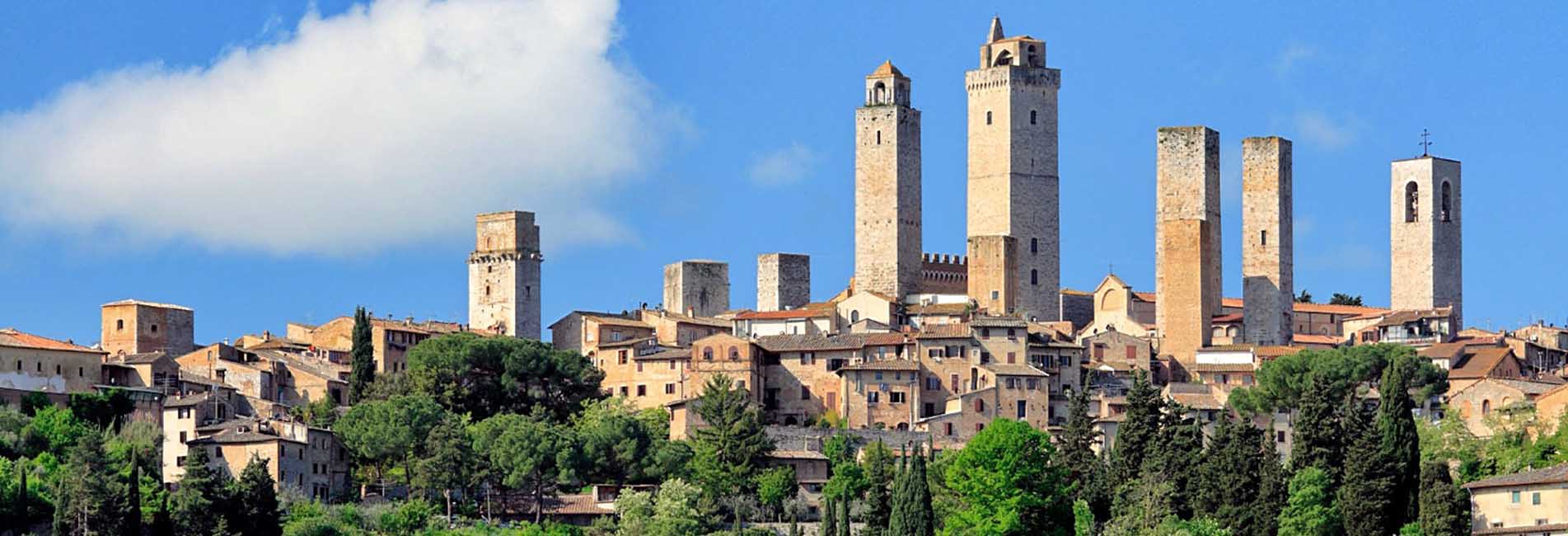Pisa
PIAZZA DEI MIRACOLI
Piazza deiMiracoli in Pisa has been considered a world heritage site by Unesco for 25 years. It is notlocated in the centre of the city as one would imagine, instead it is situated to the north west of the city walls, almost outside the city; probably when it was built there wasn’t another space big enough where to build it. Since the time of the Etruscans, Piazza deiMiracolihad been considered an important religious centre: the three structures that are in the Piazza symbolize the three main phases in man life: the Battisterorepresents the birth, the Cathedral of Santa Maria Assunta represents the life and the Camposanto clearly alludes to the death. The famous Leaning Tower is the bell Tower of the Duomo.
The square is surrounded by a nice green lawn where tourists and university students enjoy a moment of relaxation inside a historical frame of rare beauty. The name Piazza dei Miracoli was attributed to it only after the first world war when Gabriele D’Annunzio in his book “ Forsechesì, forseche no” 1910, refers to it in this way: “ L’Ardearoteònelcielo di Cristo, sulpratodeiMiracoli- The Ardea rotated in Christ’s sky, over the lawn of Miracles”. The construction began in the XI century and after various modifications was concluded only in the XIXcentury, when the architect Alessandro Della Gherardesca gave to the square its present aspect.
THE LEANING TOWER
The TOWER OF PISA (commonly known as leaning) is the bell tower of the cathedral of Santa Maria Assunta, set in the famous Piazza dei Miracoliand it is such a famous monument for its characteristic slant. It is the symbol of the city and is one of the iconic symbols of Italy. The beginning of the construction of the Tower of Pisa dates back to 1173.The underlying territory that is not perpendicular and it is subject to continuous sinkingcaused manyinterruptions to the work during the various ages and It caused the characteristic slant of the tower. In 1275 the tower was enlarged by the addition of three extra floors, the bell chamber was added in 1350 circa. Fifty five meters high, it has a 5°slant towards the south and to reach the bell chamber you must climb 294 steps. The various floors are composed of galleries and arches with the exception of the last floor where seven bells are situated.
The tower is open all year round, with different opening times according to the seasons (generally open till 7.00 pm during the summer with special nighttime opening till 10,00). Children under eight years old cannot enter, while children under eighteen years old must be accompanied by an adult. Prices do not vary according to age. If you buy the tickets online you have direct access to the tower and can avoid the long queues. Online tickets can be purchased from twenty days to one day prior to the date of your visit.
Borgo Filicardo in short
16 apartments furnished with care respecting the Tuscan tradition and equipped with all modern comforts.


 italiano
italiano Francais
Francais English
English



 Borgo Filicardo is pleased to offer free WI-FI connection in all areas, in the open spaces of the Borgo, in the common areas and of course in the apartments!
Borgo Filicardo is pleased to offer free WI-FI connection in all areas, in the open spaces of the Borgo, in the common areas and of course in the apartments!